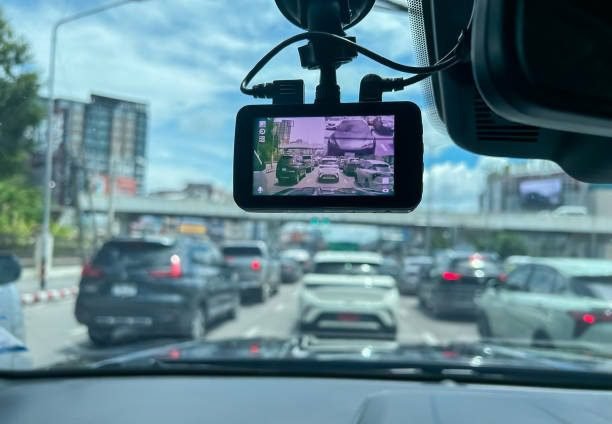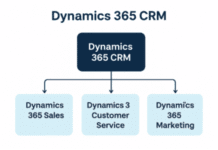In today’s competitive business landscape, companies managing vehicle fleets are constantly searching for solutions that improve safety and reduce operational costs. One significant expense that fleet managers seek to control is insurance premiums. Insurance costs for vehicles can be substantial, often influenced by factors such as accident history, theft risk, driver behavior, and vehicle maintenance. Emerging technologies like GPS tracking systems and dashcam GPS trackers have reshaped how fleets manage these aspects, offering new avenues for reducing insurance expenses.
This article provides a comprehensive analysis of how using GPS tracking systems and dash cam with gps can contribute to lowering insurance costs. It explores the key factors impacting insurance pricing, the trade-offs and challenges involved, and the considerations fleet managers must weigh in adopting these technologies. The goal is to offer an objective, informative perspective accessible to professionals interested in leveraging tech for smarter fleet management.
Table of Contents
Understanding Insurance Costs for Fleets
Vehicle insurance premiums are determined by a blend of risk factors mostly centered on the probability and cost of claims. For commercial fleets, insurers assess:
- The size and makeup of the fleet, including vehicle value and safety ratings.
- Historical claim data of the fleet and drivers.
- The geographic operating area, with urban locations typically incur higher premiums.
- Driver behavior and history, including speeding, harsh braking, and accident records.
- Vehicle usage patterns, such as mileage and driving hours.
- Anti-theft and vehicle security measures installed.
Each of these factors contributes to the insurer’s perceived risk level, directly impacting the premium charged. Traditionally, this calculation relied heavily on static historical data, demographic assumptions, and aggregated risk models.
How GPS Tracking Systems Influence Insurance Premiums
GPS tracking systems have revolutionized risk assessment by providing real-time, precise vehicle data that insurers use to re-evaluate their assumptions. Fleets equipped with GPS tracking systems can often negotiate significant discounts—sometimes between 25% to 35% or more—on their insurance costs due to the enhanced control and visibility these systems provide.
The core ways GPS tracking systems help reduce insurance premiums include:
- Improving Driver Behavior: GPS tracker detects speeding, sudden acceleration, harsh cornering, and abrupt braking. Awareness that driving behavior is monitored often encourages drivers to act more cautiously. Consistent safe driving reduces the frequency and severity of accidents, which insurers reward with lower rates.
- Theft and Vandalism Prevention: GPS technology acts as a deterrent for theft and enables rapid recovery of stolen vehicles by pinpointing their location. This reduces the insurer’s risk of total loss payouts.
- Proactive Maintenance: Fleet managers can generate maintenance schedules tailored to actual vehicle usage data from GPS tracking systems. Better-maintained vehicles are less prone to breakdowns and accidents, translating to lower claims.
- Reduced Vehicle Misuse: By monitoring vehicle movements, GPS systems prevent unauthorized or off-hours personal use of company vehicles, decreasing unnecessary wear and accident exposure.
- Accident Verification: GPS data provides factual evidence of vehicle location, speed, and impact times in case of incidents, aiding insurers in faster, more accurate claims processing and deterring fraudulent claims.
This real-time data access modernizes insurance underwriting, making risk evaluation dynamic rather than based solely on past records. As a result, businesses demonstrating safer driving habits and comprehensive vehicle monitoring are viewed as lower risk and rewarded via reduced insurance costs.
The Role of Dashcam GPS Trackers in Insurance Savings
Dashcam GPS trackers supplement GPS vehicle tracking systems by providing visual evidence alongside location data. These devices record live footage combined with GPS telemetry, thereby offering context to events on the road.
Key insurance-related benefits of dashcam GPS trackers include:
- Accurate Incident Documentation: Video evidence from a dashcam can clarify the circumstances of an accident better than witness statements alone. This can speed up claim settlements and reduce disputed liability claims.
- Deterrence of Fraud and False Claims: The presence of video footage discourages fraudulent accident claims and exaggerations. Drivers are less likely to engage in risky behavior knowing it can be recorded.
- Enhanced Driver Accountability: Reviewing dashcam footage encourages drivers to maintain higher safety standards. Teams may incorporate footage reviews as part of driver coaching programs.
- Supporting Legal Protection: In severe cases, dashcam evidence can be critical in legal disputes, protecting fleets from unwarranted liability and expensive settlements.
Trade-Offs and Challenges in Using GPS Tracking Systems and Dashcam GPS Trackers
Adopting these technologies involves balancing various factors and addressing potential challenges:
- Cost of Implementation: Installing comprehensive GPS tracking and dashcam systems involves upfront hardware costs and ongoing subscription fees for monitoring services. Small fleets may find these expenses significant relative to the potential insurance savings.
- Data Privacy and Employee Acceptance: Drivers may perceive tracking devices as invasive, raising concerns about privacy. Transparent communication and clear policies about how data will be used are critical to gaining employee buy-in.
- Data Management Overhead: Continuous data streams from GPS and video devices require infrastructure to store, analyze, and act on information. This may demand new IT investments and process changes.
- Potential Overreliance on Technology: While GPS and dashcam systems reduce uncertainty, they cannot prevent all accidents. Overreliance might inadvertently cause complacency in other important safety practices.
- Limitations in Coverage: GPS and dashcam technology effectiveness can be limited by signal loss in remote areas, system malfunctions, or damage to equipment.
Considerations for Fleet Managers and Decision Makers
When deciding to implement GPS tracking and dashcam GPS trackers to reduce insurance costs, businesses should consider these factors carefully:
- Compatibility with Existing Systems: Ensure new tracking technology integrates smoothly with current fleet management software and telematics.
- Scalability and Flexibility: Technology solutions should be scalable to accommodate fleet growth and adaptable to different types of vehicles.
- Insurance Provider Requirements: Engage insurers early to understand the documentation and reporting needed to qualify for premium discounts.
- Return on Investment: Weigh total costs—hardware, installation, subscription fees—against anticipated insurance savings and operational efficiencies.
- Legal and Regulatory Compliance: Data collection and surveillance must comply with local laws regarding employee monitoring and data privacy.
- Training and Usage Policies: Provide training for fleet drivers and managers on device usage, data interpretation, and adherence to safety protocols.
The Broader Impact on Fleet Operations and Safety Culture
Beyond cost savings, deploying GPS tracking systems and dashcam GPS trackers fosters a culture of safety and accountability within the fleet. Real-time data supports continuous improvement in driver behavior, safer road practices, and more responsible vehicle usage. This promotes not only lower demand but also enhances company reputation and employee morale.
Moreover, proactive maintenance schedules supported by vehicle data help fleets avoid costly repairs and downtime, further contributing to operational resilience.
Final Thoughts
Incorporating GPS tracking systems and dashcam GPS trackers into fleet management strategies represents a powerful mechanism for reducing vehicle insurance costs. These technologies provide insurers with clearer, more accurate data that translates into better risk assessment. Enhanced driver behavior, theft prevention, precise accident evidence, and improved vehicle maintenance are primary contributors to lowering premiums.
However, decision-makers must balance costs, privacy concerns, data management, and implementation challenges to maximize benefits. By carefully considering these factors and aligning technology adoption with insurer requirements, fleets can achieve substantial insurance savings while promoting safer, more efficient operations.
Ultimately, these tools are more than just cost-cutting devices; they are integral elements of modern, technology-driven fleet management that enhance safety, accountability, and long-term sustainability.
















